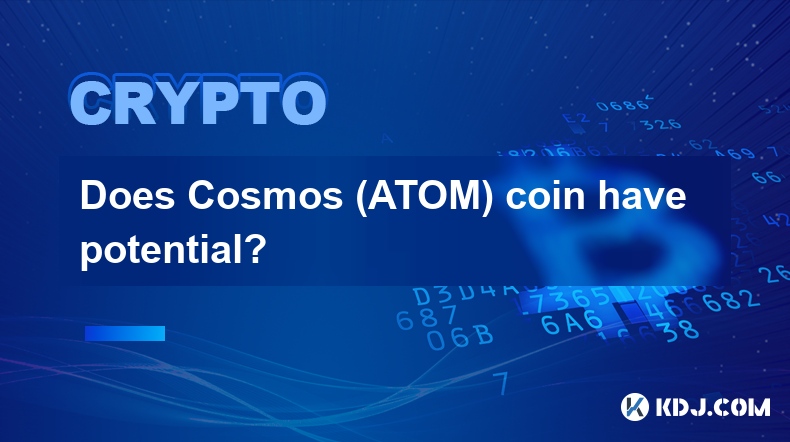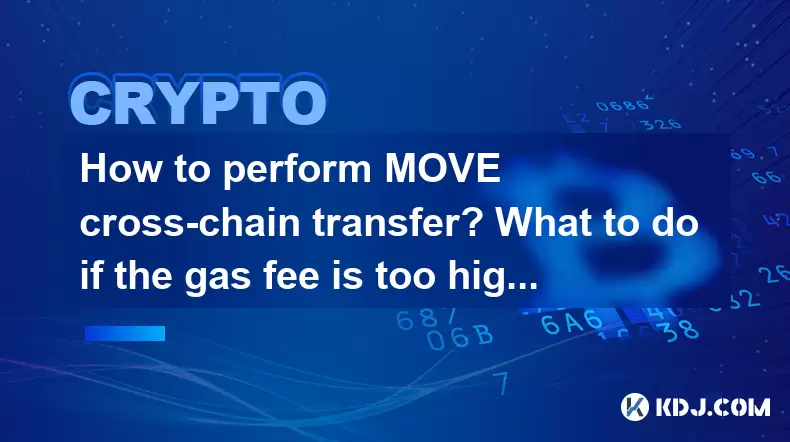-
 Bitcoin
Bitcoin $102,662.5363
4.85% -
 Ethereum
Ethereum $2,193.0670
19.81% -
 Tether USDt
Tether USDt $0.9999
-0.02% -
 XRP
XRP $2.3038
7.50% -
 BNB
BNB $625.3061
3.85% -
 Solana
Solana $162.5747
9.35% -
 USDC
USDC $1.0000
-0.02% -
 Dogecoin
Dogecoin $0.1948
11.09% -
 Cardano
Cardano $0.7630
11.78% -
 TRON
TRON $0.2574
3.22% -
 Sui
Sui $4.0011
17.05% -
 Chainlink
Chainlink $15.7755
11.92% -
 Avalanche
Avalanche $22.1531
11.42% -
 Stellar
Stellar $0.2965
12.70% -
 Shiba Inu
Shiba Inu $0.0...01431
10.58% -
 Bitcoin Cash
Bitcoin Cash $418.8427
3.36% -
 Hedera
Hedera $0.1947
9.85% -
 UNUS SED LEO
UNUS SED LEO $8.8625
0.49% -
 Toncoin
Toncoin $3.1835
5.09% -
 Hyperliquid
Hyperliquid $23.2143
10.04% -
 Litecoin
Litecoin $94.7248
4.08% -
 Polkadot
Polkadot $4.4824
10.46% -
 Monero
Monero $301.2717
6.79% -
 Dai
Dai $1.0001
-0.02% -
 Bitget Token
Bitget Token $4.4883
5.14% -
 Pi
Pi $0.6881
13.78% -
 Ethena USDe
Ethena USDe $1.0000
-0.06% -
 Pepe
Pepe $0.0...01096
30.81% -
 Uniswap
Uniswap $6.0905
23.37% -
 Bittensor
Bittensor $424.6065
12.59%
Does Cosmos (ATOM) coin have potential?
Cosmos's ecosystem of specialized blockchains, coupled with its focus on interoperability, unlocks boundless possibilities for building decentralized applications and driving innovation in various industries.
Dec 09, 2024 at 12:20 am

Cosmos (ATOM): Unveiling the Potential of a Blockchain Ecosystem
Introduction
Cosmos (ATOM) has emerged as a formidable player in the blockchain realm, offering a unique and ambitious vision for a decentralized, interoperable blockchain ecosystem. Its potential lies in its innovative network of specialized blockchains, or zones, connected through a central Cosmos Hub. This article delves into the various facets of Cosmos's potential, exploring its key features, technological advancements, and the transformative opportunities it presents to the blockchain industry.
1. Interoperability: Breaking Down Blockchain Boundaries
One of Cosmos's most significant strengths is its focus on interoperability, enabling seamless communication and value exchange across multiple blockchains. By eliminating the barriers separating different protocols, Cosmos fosters an ecosystem where developers can build applications that leverage the unique capabilities of each specialized blockchain. This cross-chain interoperability solves a fundamental challenge in the blockchain space, unlocking new possibilities for innovation and collaboration.
2. Tendermint BFT: Ensuring Security and Efficiency
Underpinning the Cosmos ecosystem is the robust Tendermint Byzantine Fault Tolerance (BFT) consensus algorithm, renowned for its lightning-fast transaction finality and high security. Tendermint enables the Cosmos Hub to orchestrate the validation of transactions occurring within the connected zones, providing a reliable and efficient foundation for the entire network. Its ability to withstand faults ensures that the network remains operational even in adverse conditions, guaranteeing the integrity of the blockchain ecosystem.
3. Cosmos SDK: A Developer-Friendly Framework
Cosmos offers a comprehensive software development kit (SDK) specifically tailored for building blockchains and applications. The SDK simplifies the complexities of blockchain development, providing developers with a comprehensive set of tools and libraries. Its modular design allows developers to customize and tailor their projects to specific requirements, fostering innovation and accelerating the growth of the Cosmos ecosystem.
4. IBC (Inter-Blockchain Communication) Protocol: Bridging Blockchain Gaps
The Inter-Blockchain Communication (IBC) protocol serves as the backbone of Cosmos's interoperable network. IBC enables zones to seamlessly exchange data and assets with one another, creating a cohesive blockchain ecosystem where applications can freely access and utilize capabilities from different blockchains. This cross-chain communication unlocks endless possibilities for building complex decentralized applications and services.
5. Staking and Governance: Empowering Token Holders
ATOM, the native token of Cosmos, plays a crucial role in incentivizing network participation and securing the blockchain. Token holders can stake their ATOM to receive rewards and contribute to the validation process, ensuring the network's integrity and stability. ATOM holders also have the ability to actively engage in governance, participating in decision-making and shaping the future of the Cosmos ecosystem through proposals and voting mechanisms.
6. Cross-Zone Transactions: Unleashing a Multi-Blockchain Landscape
Cosmos introduces the concept of cross-zone transactions, empowering developers to create applications that seamlessly interact with multiple blockchains. Developers can leverage IBC to enable asset transfers, data exchange, and even complex interactions between different zones within the Cosmos ecosystem. This cross-chain functionality opens up a world of possibilities for creating decentralized applications that leverage the diverse capabilities of multiple specialized blockchains.
7. Future-Proof Network: Adapting to Innovation
Cosmos embraces an evolutionary approach, continuously adapting to the rapidly evolving blockchain landscape. Through its modular architecture and extensive upgradeability features, Cosmos can seamlessly integrate new technologies and innovations. This future-proof design ensures that the Cosmos ecosystem remains relevant and adaptable, allowing it to stay at the forefront of blockchain advancements.
8. Use Cases: Real-World Applications
The potential of Cosmos extends far beyond theoretical concepts, materializing in a
Disclaimer:info@kdj.com
The information provided is not trading advice. kdj.com does not assume any responsibility for any investments made based on the information provided in this article. Cryptocurrencies are highly volatile and it is highly recommended that you invest with caution after thorough research!
If you believe that the content used on this website infringes your copyright, please contact us immediately (info@kdj.com) and we will delete it promptly.
- Coinbase's Q1 2025 Earnings Report Disappoints Bullish Expectations in Several Key Areas
- 2025-05-09 09:05:13
- Obol Collective Launches the OBOL Token, Powering the Future of Decentralized Ethereum Staking
- 2025-05-09 09:05:13
- Sun Life Financial Inc. (TSX: SLF) (NYSE: SLF) Declares a Dividend of $0.88 Per Share
- 2025-05-09 09:00:12
- Sun Life Announces Intended Renewal of Normal Course Issuer Bid
- 2025-05-09 09:00:12
- Coinbase (COIN) Q1 CY2025 Highlights: Revenue Falls Short of Expectations, but Sales Rose 24.2% YoY to $2.03B
- 2025-05-09 08:55:12
- BlockDAG (BDAG) Clears Its Third Audit, Prepping for Launch
- 2025-05-09 08:55:12
Related knowledge

How to calculate Ethereum fee after EIP-1559? How to save?
May 09,2025 at 08:01am
The introduction of EIP-1559 in August 2021 brought significant changes to the Ethereum network's fee structure, revolutionizing how users interact with transaction costs. This article will delve into the specifics of how to calculate Ethereum fees post-EIP-1559 and offer strategies to save on these fees. Understanding EIP-1559 and its ComponentsEIP-155...

Is Ethereum smart contract call fee high? How to optimize costs?
May 08,2025 at 09:35am
Is Ethereum Smart Contract Call Fee High? How to Optimize Costs? The world of Ethereum smart contracts has revolutionized the way we think about decentralized applications and blockchain technology. However, one of the most frequently discussed topics within this realm is the cost associated with executing smart contract calls. In this article, we will ...

Is Ethereum Layer2 fee low? How to use it cheaper?
May 08,2025 at 03:56am
The question of whether Ethereum Layer 2 solutions offer lower fees and how to use them more economically is a topic of great interest within the cryptocurrency community. Ethereum's Layer 2 solutions have been developed to address the high transaction fees and scalability issues associated with the main Ethereum network. In this article, we will delve ...

How to calculate Ethereum network fee? How to reduce transaction costs?
May 08,2025 at 02:15am
Understanding and managing Ethereum network fees is crucial for anyone involved in transactions on the Ethereum blockchain. The network fee, also known as gas fee, is the amount of Ether (ETH) required to successfully conduct a transaction or execute a smart contract on the Ethereum network. Calculating these fees and finding ways to reduce them can sig...

What is Ethereum Gas Fee? How to optimize Gas Fee to save costs?
May 08,2025 at 03:43am
Ethereum gas fees are a crucial aspect of interacting with the Ethereum blockchain. Understanding and optimizing these fees can significantly impact the cost-effectiveness of transactions and smart contract interactions. In this article, we will delve into what Ethereum gas fees are, how they are calculated, and provide detailed strategies for optimizin...

How to perform MOVE cross-chain transfer? What to do if the gas fee is too high?
May 07,2025 at 08:03pm
Introduction to MOVE Cross-Chain TransferCross-chain transfers have become an essential part of the cryptocurrency ecosystem, allowing users to move assets between different blockchain networks. One of the popular protocols for achieving this is the MOVE cross-chain transfer. This article will guide you through the process of performing a MOVE cross-cha...

How to calculate Ethereum fee after EIP-1559? How to save?
May 09,2025 at 08:01am
The introduction of EIP-1559 in August 2021 brought significant changes to the Ethereum network's fee structure, revolutionizing how users interact with transaction costs. This article will delve into the specifics of how to calculate Ethereum fees post-EIP-1559 and offer strategies to save on these fees. Understanding EIP-1559 and its ComponentsEIP-155...

Is Ethereum smart contract call fee high? How to optimize costs?
May 08,2025 at 09:35am
Is Ethereum Smart Contract Call Fee High? How to Optimize Costs? The world of Ethereum smart contracts has revolutionized the way we think about decentralized applications and blockchain technology. However, one of the most frequently discussed topics within this realm is the cost associated with executing smart contract calls. In this article, we will ...

Is Ethereum Layer2 fee low? How to use it cheaper?
May 08,2025 at 03:56am
The question of whether Ethereum Layer 2 solutions offer lower fees and how to use them more economically is a topic of great interest within the cryptocurrency community. Ethereum's Layer 2 solutions have been developed to address the high transaction fees and scalability issues associated with the main Ethereum network. In this article, we will delve ...

How to calculate Ethereum network fee? How to reduce transaction costs?
May 08,2025 at 02:15am
Understanding and managing Ethereum network fees is crucial for anyone involved in transactions on the Ethereum blockchain. The network fee, also known as gas fee, is the amount of Ether (ETH) required to successfully conduct a transaction or execute a smart contract on the Ethereum network. Calculating these fees and finding ways to reduce them can sig...

What is Ethereum Gas Fee? How to optimize Gas Fee to save costs?
May 08,2025 at 03:43am
Ethereum gas fees are a crucial aspect of interacting with the Ethereum blockchain. Understanding and optimizing these fees can significantly impact the cost-effectiveness of transactions and smart contract interactions. In this article, we will delve into what Ethereum gas fees are, how they are calculated, and provide detailed strategies for optimizin...

How to perform MOVE cross-chain transfer? What to do if the gas fee is too high?
May 07,2025 at 08:03pm
Introduction to MOVE Cross-Chain TransferCross-chain transfers have become an essential part of the cryptocurrency ecosystem, allowing users to move assets between different blockchain networks. One of the popular protocols for achieving this is the MOVE cross-chain transfer. This article will guide you through the process of performing a MOVE cross-cha...
See all articles






















































































